Llandybie is a former mining town, situated about two miles north of Ammanford. The Parish Church, which is dedicated to St Tybie, contains two brass memorial plaques, which commemorate the men of the Parish who fell during both World Wars. There are two other memorials in Llandybie Memorial Hall which contain the same names. I have also taken the opportunity to add a few men who are not commemorated locally, but who were either born in or resided at Llandybie. Many Thanks to Dave Hanson for photographs of the Memorials, and of the graves of some of the men buried at Llandybie, and also to Terry Norman for the photos of some of the local war graves.
The Great War 1914-1918
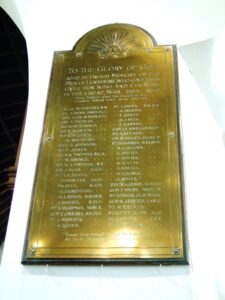
Albert Edward Abrahall, Private, 266028, Welsh Regiment. Albert was the son of George and Elizabeth Abrahall, of 185, Drummond Street, Hampstead Road, London. Prior to the war he resided in Llandybie. He enlisted in Swansea under the name of Albert Hayward, into the 6th Battalion, Welsh Regiment and joined the battalion in France on 14 March 1915. On 5 July 1915 the battalion became attached to 84 Brigade, 28th Division. They fought at the Battle of Loos with the Division, but in October that year the Division were sent to Salonika, and so the 6th Welsh transferred, firstly to 3 Brigade, 1st Division and then becoming Pioneers to the 1st Division. The Division moved to the Somme, where they took part in most of the Battles there, from the opening Battle of Albert to the Battle of Morval, and in early 1917 they followed up the German retreat to the Hindenburg Line. In the Summer of 1917 the Division moved to the Flanders Coast but were moved south again when the Battle of Third Ypres became bogged down. The Division attacked the village of Passchendaele on 26 October 1917, and in the build up to the Battle, Albert was killed in action on 24 October 1917, whilst the Pioneers were hard at work preparing trenches and paths for the main assault. He was 29 years old, and is buried in Essex Farm Cemetery, Belgium. Albert is not commemorated on the Llandybie Memorial.
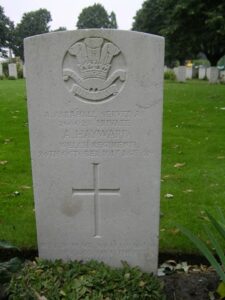
Alfred Beynon, Private, 44156, South Wales Borderers. Alfred was the son of Lloyd and Margaret Beynon, of Plasbach Farm, Ammanford. He originally enlisted at Ammanford into the 9th Battalion, Welsh Regiment, and fought at the Battle of Loos, being wounded by shrapnel in the back. After recovery, Alfred was transferred into the 2nd Battalion, South Wales Borderers. The battalion had been in Tientsin, China at the outbreak of war, and had fought on Gallipoli as part of 87 Brigade, 29th Division. Alfred joined the Battalion in France, and fought with them at the Battle of the Somme, near Beaumont Hamel, where the 2nd SWB suffered terrible casualties. The Division wintered on the Somme, in the Ancre Valley, and this is where Alfred was killed in action on 28 January 1917, aged 24. He is commemorated on the Thiepval Memorial, France.
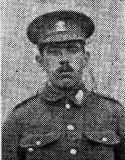
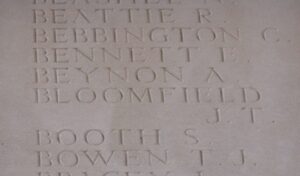
Ernest Thomas Dallen, Private, 442967, Canadian Expeditionary Force. Ernest was born on 6 January 1893, the son of Edwin William and Clara Dallen, of 185, Monument Road, Edgbaston, Birmingham. He lived at 4, Thomas Terrace, Llandybie prior to the war. Ernest emigrated to Canada sometime after 1911 with his sister Dorothy, and enlisted on 16 May 1915, at Vernon Camp, British Columbia, into the 7th Battalion, Canadian Infantry. The 7th Battalion were part of 2 Brigade, 1st Canadian Division, which had been in France since February 1915. Ernest would have arrived in France by late 1915, and would have joined the Battalion near Mount Sorrel, south of Ypres. Sadly, he was killed in action there on 29 May 1916, aged 24, and is buried at Railway Dugouts Burial Ground, Belgium. His brother William had been killed at Loos the previous year.
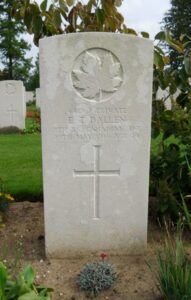
William Edwin Dallen, Corporal, 13204, Gloucestershire Regiment. William was the son of Edwin William and Clara Dallen, of 185, Monument Road, Edgbaston, Birmingham. The family lived at 4, Thomas Terrace, Llandybie prior to the war. William enlisted at Gloucester into the 10th Battalion, Gloucestershire Regiment, which was part of 1 Brigade 1st Division. The Battalion landed in France on 8 August 1915, and joined the Division near Loos. Here they took part in the Battle of Loos, and it was during the first assault that William was Killed in action, on 25 September 1915. He is buried at St. Mary’s A.D.S. Cemetery, Haisnes, France. His brother Ernest was killed at Ypres the following year, and a third brother, Archie, was in hospital suffering from wounds when William was killed.
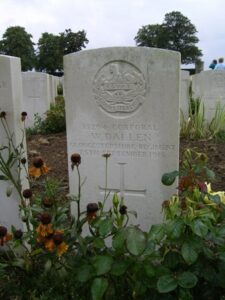
Rees Daniel, Lance Sergeant, 14149, Royal Welsh Fusiliers. Rees was the son of John and Mary Daniel of Gwynffrwd, Llandybie, and the husband of Miriam Daniel. He enlisted at Ammanford into the 11th Battalion, Royal Welsh Fusiliers, which was attached to 67 Brigade, 22nd Division, and the Division moved to France in September 1915. Their stay there was short however as they were moved to Salonika by 5 November 1915, where they fought throughout the campaign there. Rees was killed in action during the Battle of Doiran, on 18 September 1918, aged 31. He is commemorated on the Doiran Memorial, Salonika. Rees is not named on the memorial at Llandybie Church, but is named on the Memorial Hall plaque.
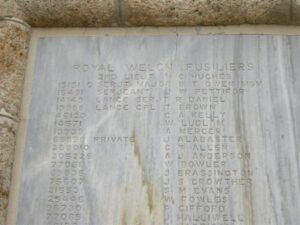
George Davies, Lance Corporal, 4215, Welsh Regiment. George was born in Hereford, but resided in Llandybie prior to the war, enlisting at Ammanford into the 1/4th Battalion, Welsh Regiment, which was attached to 159 Brigade, 53rd (Welsh) Division. The Division landed on Gallipoli on 9 August 1915, and was immediately thrown into desperate fighting. George was sadly wounded soon after landing. He died of his wounds aboard a Hospital Ship on 15 August 1915, and was buried at Sea. He is commemorated on the Helles Memorial, Gallipoli.
Ivor Davies, Private, 3783, Welsh Regiment. Ivor was born in Mountain Ash. By 1901 his wife Sarah had died, and Ivor lodged with his son William at Rhandir House, Llandybie. He enlisted at Ammanford into the 1/4th Battalion, Welsh Regiment, which was attached to 159 Brigade, 53rd (Welsh) Division. The Division landed on Gallipoli on 9 August 1915, and was thrown into desperate fighting. George was sadly wounded days after landing. He died of his wounds aboard a Hospital Ship on 17 August 1915, aged 41, and was buried at Sea. Ivor is commemorated on the Helles Memorial, Gallipoli.
John Davies, Private, 19627, Royal Fusiliers. John was the son of David and Eleanor Davies, of Llwyngarw, Llandybie. He enlisted at Swansea into army, and was posted to the 11th Battalion, Royal Fusiliers, part of 54 Brigade, 18th Division. The Division had landed in Boulogne on 25 May 1915. They fought throughout the Battles of the Somme in 1916, and followed the German retreat to the Hindenburg Line in March 1917. They then fought at the Battle of the Scarpe before moving to Ypres, where they fought at the Battle of Pilckem. John was Killed in action at Ypres on 10 August 1917, aged 31. He is commemorated on the Ypres (Menin Gate) Memorial, Belgium.
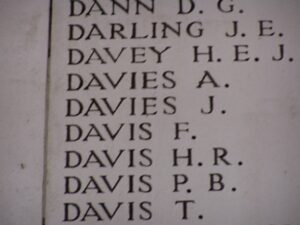
William James Davies, Lance Corporal, 48124, Kings Liverpool Regiment. William was the son of Samuel and Mary Davies, of Angel Cottage, Llandybie. He enlisted at Ammanford into the King’s Liverpool Regiment, but later transferred into first the Welsh Regiment, and then the 81st Company, Labour Corps. This was probably due to his health not being able to withstand the rigours of trench warfare. Not much is known about William’s part in the war, but he died in France on 27 July 1918, aged 38, and is buried at Bagneux British Cemetery, Gézaincourt, France.
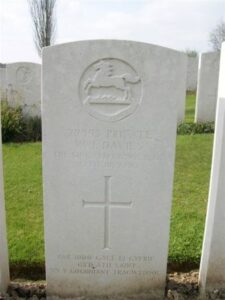
William John Davies, Private, 20575, Welsh Regiment. William was born in Llandybie, the son of John and Sarah Davies. The family later resided at 1, Villiers Road, Ammanford. William worked at the Wernos Colliery prior to enlisting at Ammanford into the 15th Battalion, Welsh Regiment, which was the Carmarthen Pals battalion, and formed part of 114 Brigade, 38th (Welsh) Division. In the summer of 1915 the Battalion moved with the remainder of the Welsh Division to Morn Hill Camp, Winchester, where it completed its training and equipping, and embarked for France from Folkestone on 5 December 1915, disembarking at Boulogne the same day. During the winter and spring of 1916 the Battalion held the line in French Flanders, and then moved south to the Somme, where they fought at Mametz Wood. After a year in reserve, the division took part in the famous assault on Pilckem Ridge on 31 July 1917. After a successful, yet costly, attack, the 15th Welsh remained in the line in support for the assault on Langemark. William was badly wounded here, and was evacuated to a casualty clearing station where both of his legs were amputated. He died of his wounds on 6 August 1917, aged 23, and is buried at Dozinghem Military Cemetery, Belgium. William is not commemorated at Llandybie or at Ammanford.
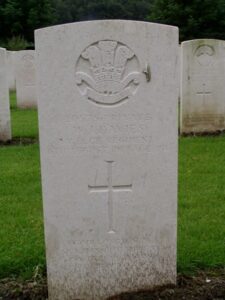
John Edmund Du Buisson, Second Lieutenant, Royal Field Artillery. John was born on 19 January 1898, the son of Arthur Edmund and Helen Letitia Du Buisson, of Swiftsden, Hurst Green, Sussex, and of Glynhir, Llandybie. He was educated at Wells House School, Malvern Wells, and at Marlborough College. He entered the Royal Military Academy in October, 1914, received his commission in April 1915 and went to France in the following September, joining ‘C’ Battery, 99th Brigade, Royal Field Artillery, which was attached to the 22nd Division. The Division concentrated in Salonika during December 1915, and fought the Bulgarian and Turkish Armies there for the remainder of the war. It was during the Battle of Machukovo that John sadly died of dysentery, aged only 18, on 11 October 1916. He is buried at Salonika (Lembet Road) Military Cemetery, Salonika. John is also commemorated on an individual marble memorial within the Church.
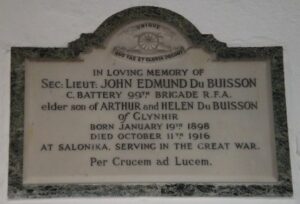
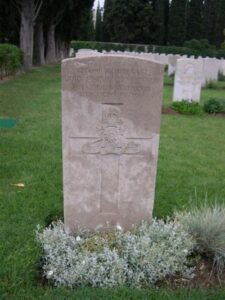
John Dunn, Private, 41077 Royal Irish Fusiliers. John was born in London, but resided in Llandybie prior to the war, enlisting at Ammanford into the Dragoons. He transferred into the 9th Battalion, Royal Irish Fusiliers, part of 108 Brigade 36th (Ulster) Division, which moved to France during the first week of October, 1915. They concentrated around Flesselles, near Arras, where they were familiarised into trench warfare, then moved to Abbeville throughout the winter, to train. On 7 February 1916, the Division took over the front line on the Somme between the Ancre to the Mailly-Maillet to Serre Road. They remained here, taking part in the initial assaults of 1 July 1916, and was the only Division to make a successful attack, but suffered badly, and so was withdrawn on 5 July to rebuild. In June 1917 the division took part in the Battle of Messines, where they again made a name for themselves, capturing Wytschaete, and then fought in the Battle of Langemarck, where John was Killed in action on 26 October 1917. He was 26 years old, and is buried in Neuville-Bourjonval British Cemetery, France.
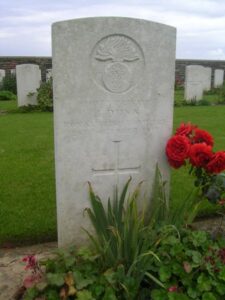
Edgar Emlyn Evans, Guardsman, 25838, Grenadier Guards. Edgar was the son of George and Sarah Evans, of Gwalia, Llandybie. He was a policeman prior to the war, having been posted at Whitland, Llanelly, Llandeilo and Pencader and enlisted at Ammanford into the 2nd Battalion, Grenadier Guards. The battalion had been in France with the 3rd Division since the Battle of Mons, and had fought through the retreat to the Aisne. They had fought at First Ypres, and in August 1915 were attached to the newly formed 3rd Guards Brigade, Guards Division. The Division fought through the Battle of Loos, then at Flers and Morval during the 1916 Somme Battles, and saw much action at Third Ypres. They fought during the Battle of Cambrai and were in the area when the German Spring Offensive was launched on 21 March 1918. Edgar was Killed in action during this traumatic period, on 4 April 1918, aged 25, and is buried at Bucquoy Road Cemetery, Ficheux, France.

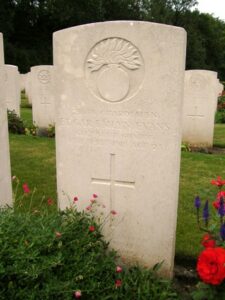
William Thomas Evans, Private, SE/32591, Royal Army Veterinary Corps. William was the son of Thomas and Sarah Evans, of Hawthorn Villa, Blaina Road, Llandybie. He had worked as a coalminers assistant prior to enlisting at Carmarthen into the Royal Army Veterinary Corps. He does not appear to have served overseas, but became ill and died of pneumonia in hospital at Salisbury on 2 July 1918, aged 24. His body was brought home to Llandybie, where he was buried with full military honours in Llandybie (St. Tybie) Churchyard. Three of his brothers were also serving at the time.
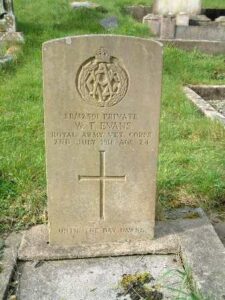
William George, Private, 12110, Welsh Regiment. William was born in Leominster, but resided in Llandybie prior to the war, enlisting at Ammanford into the 8th Battalion, Welsh Regiment which was part of 40 Brigade, 13th (Western) Division. The Division came into existence on 21 August 1914, and was formed of volunteers, and assembled on Salisbury Plain. 40 Brigade moved to Chiseldon and Cirencester in September 1914, and towards the end of February the entire Division concentrated at Blackdown in Hampshire. Sadly William died in Hampshire on 6 March 1915, aged 21, and is buried in Tidworth Military Cemetery.
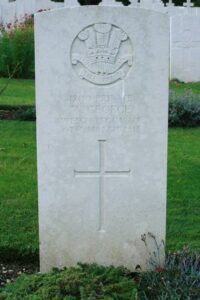
David John Griffiths, Private, 937, Welsh Guards. David was born at Tynycoed Cottage, Pontamman in the Autumn of 1887, the son of John Henry Griffiths and Hannah Richards. He was the eldest of eleven children, and a first cousin of Jim Griffiths MP. David enlisted at Swansea into the 1st Battalion, Welsh Guards. On 18 August 1915 the Battalion joined 3 Brigade, Guards Division in France, and the Division fought through the Battle of Loos, then at Flers and Morval during the 1916 Somme Battles, and saw out the winter of 1916/17 on the Somme. David was Killed in action on the Somme on 8 March 1917, and is buried in Sailly-Saillisel British Cemetery, France. Both David’s brother Rees William Griffiths and his cousin John Henry Griffiths (Shoni) came back from the War with severe injuries that later caused their early deaths.
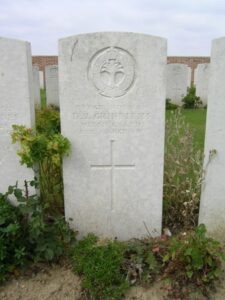
Frederick Hanson, Gunner, 2807, Royal Field Artillery. Frederick was born in All Stretton, Shropshire, on 18 February 1888, the son of John Adam Hanson and Betsy Hanson (nee Speake). He had moved to Piode Cottage, Llandybie by about 1902 and worked as a quarryman there. Frederick enlisted at Ammanford into the Royal Field Artillery in September 1914, and was posted as a Gunner to ‘D’ Battery, 62nd Brigade, Royal Field Artillery, which was attached to the 12th (Eastern) Division. The division moved to France at the end of May 1915, and moved to the Steenwerck area to familiarise into trench warfare, before taking over the line at Ploegsteert. The division then moved slightly south, taking part in the Battle of Loos and in the action at the Hohenzollern Redoubt. The division wintered at Loos, then moved out of the area in April 1916, before moving to the Somme sector. The division held a section of the line near Millencourt and on 1 July 1916 took part in the opening assault of the Somme offensive, playing an important role in the assault on Ovillers-La Boiselle. Frederick’s gun battery had been bivouacked at Henencourt Wood before setting up its guns to support the advancing infantry. Frederick was killed in action here on 4 July 1916, in torrential rain. The 28-year-old is buried in Bapaume Post Military Cemetery, Albert, France.
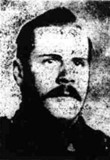
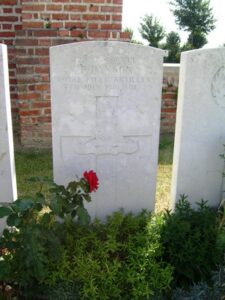
David Harries, Private, 11822, Welsh Regiment. David was born in Llandeilo, but resided in Llandybie prior to the war and enlisted at Ammanford into the 8th Battalion, Welsh Regiment. Initially part of 40 Brigade, 13th (Western) Division, the Battalion became the Divisional Pioneers, which landed at Cape Helles at the beginning of July 1915. They then moved to ANZAC Cove, where they took part in the Battle of Sari Bair. This is where David was killed in action on 8 August 1915. He is commemorated on the Helles Memorial, Gallipoli.
John Harries, Private, 40951, Royal Welsh Fusiliers. John was the son of John and Catherine Harries, of Oaklands, Llandybie. He enlisted at Llandeilo into the army, and was posted to France, joining the 13th Battalion, Royal Welsh Fusiliers, which was attached to 113 Brigade, 38th (Welsh) Division. In the summer of 1915 the Battalion moved with the remainder of the Welsh Division to Morn Hill Camp, Winchester, where it completed its training and equipping, and embarked for France from Folkestone on 5 December 1915, disembarking at Boulogne the same day. During the winter and spring of 1916 the Battalion held the line in French Flanders, and then moved south to the Somme, where they fought at Mametz Wood. After a year in reserve, they fought at Pilckem Ridge and Langemarck in Third Ypres, and were back on the Somme in 1918 facing the German Offensive, having escaped the carnage in Flanders. John was wounded by shrapnel during the German attack over the Somme battlefields, and was evacuated to a casualty clearing station, where he died of wounds on 6 May 1918, aged only 20. He is buried at Varennes Military Cemetery, France.
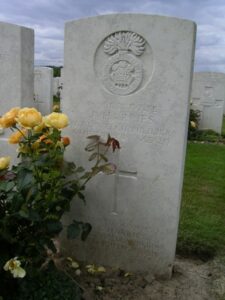
Charles Haydn Lloyd Hughes, Private, 14180, Northamptonshire Regiment. Charles, known as Haydn, was the son of Thomas and Sarah Hughes, of Mount Pleasant, Llandybie. The family later moved to Caerbrynfach, Penygroes. Haydn enlisted at Tumble into the army, and was posted to the 3rd Battalion, Northamptonshire Regiment, which was a Reserve Battalion. Haydn died at St. Asaph on 5 October 1915, aged just 19. He is buried at Penygroes (Jerusalem) Calvinist Methodist Chapelyard. Haydn is not commemorated at Llandybie.
Thomas John Hughes, Lance Corporal, 13198. Royal Welsh Fusiliers. Thomas was the son of Thomas and Anne Hughes, of Blaenau Mill, Llandybie. Thomas had worked at the Cae’rbryn Colliery prior to enlisting at Ammanford into the 9th Battalion, Royal Welsh Fusiliers, part of 58 Brigade, 19th (Western) Division. The Division crossed to France during July 1915 and saw its first action during the Battle of Loos on 25 September 1915. They then moved to the Somme, where they took part in the second wave of the attack on Ovillers-La Boiselle, capturing the village at heavy cost, and this is where Thomas was killed in action on 3 July 1916. He is commemorated on the Thiepval Memorial, France. His two brothers, Walter Grismond Hughes and William Henry Hughes, also fell.

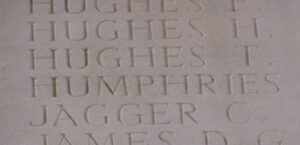
Walter Grismond Hughes, Private, 4212, Welsh Regiment. Walter was the son of Thomas and Anne Hughes, of Blaenau Mill, Llandybie. Walter had worked at the Cae’rbryn Colliery prior to enlisting at Ammanford into the 1/4th Battalion, Welsh Regiment in August 1914. The Battalion formed part of South Wales Brigade. On 17 April 1915 it was attached to 159 Brigade, 53rd Division, and in July 1915 embarked for the Mediterranean, landing at Suvla, Gallipoli on 8 August 1915. The Division was plunged into desperate fighting over the coming days. Walter was killed in action on 11 August 1915, aged just 20. He is commemorated on the Helles Memorial, Gallipoli. His two brothers, Thomas John Hughes and William Henry Hughes, also fell.

William Henry Hughes, Trimmer, 934705, Royal Navy. William was born in 1900, the son of Thomas and Anne Hughes, of Blaenau Mill, Llandybie. William served in the Royal Navy, as a Trimmer aboard H.M.S. Vindex, which was an early aircraft carrier, which had been converted from the SS Viking, with a flattened deck attached to the bow to allow land based aeroplanes to take off from her deck. The Vindex was based in the Mediterranean during the latter part of the war. William took ill aboard ship and died of influenza and pneumonia at Gibraltar Military Hospital on 19 March 1919, aged 19. He is buried in Gibraltar (North Front) Cemetery. His brothers, Thomas John Hughes and Walter Grismond Hughes, also fell. The photograph of his grave is courtesy of Dave Hanson.
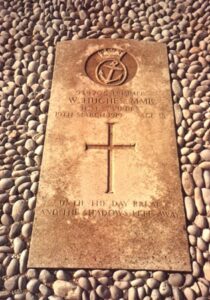
Henry Hutchings, Driver, 98624, Royal Field Artillery. Henry was born in Brentford, but resided prior to the war in Llandybie after having moved to the area to work as a farm hand. He enlisted at Ammanford into the Royal Field Artillery, serving as Driver with their 71st Brigade, attached to the 15th (Scottish) Division. The Division landed in France during July 1915, and saw its first action at the Battle of Loos on 25 September 1915. This is where Henry was sadly Killed in action, on 26 September 1915, aged 22. He is commemorated on the Loos Memorial, France.
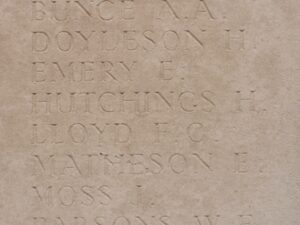
Frederick Stansfield Johnson, Second Lieutenant, Royal Field Artillery. Frederick was the Husband of Marion Roberts (Formerly Johnson) of 16, Templesheen Parade, East Sheen, Mortlake, London. His links to Llandybie are unknown as yet, but he is listed on the 1922 Carmarthen County War Memorial as being from Llandybie. Frederick had served as a Gunner in France for three years before being commissioned on 10 June 1918, and was posted to ‘C’ Battery 92nd Brigade, Royal Field Artillery. He was killed in action during the Battle of the Sambre on 4 November 1918, aged 26. Frederick is buried at Cross Roads Cemetery, Fontaine-Au-Bois, France. He is not commemorated at Llandybie.
Samuel John Johnson, Gunner, 3206, Royal Field Artillery. Samuel was the son of William George and Mary Ann Johnson, of 4, Bay View Place, Brixham. He resided in Llandybie prior to the war, and enlisted at Ammanford into the Royal Field Artillery, serving in their ‘A’ Battery, 156th Brigade, attached to the 33rd Division. The Division moved to France in November 1915 and fought throughout the Somme Offensive of July 1916 onwards. They fought in the Battle of Arras in 1917 and saw heavy fighting at Bullecourt. Samuel was hospitalised at Étaples in June 1917 after injuring his knee, and returned to duty in time to re-join his unit near Ypres. It was here, during the Battle of Polygon Wood, that Samuel was Killed in action on 27 September 1917, aged 27. He is buried at The Huts Cemetery, Belgium.
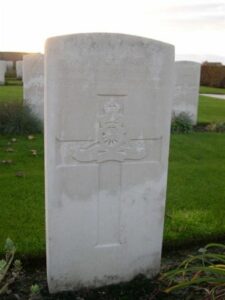
David Jones, Driver, 29983, Royal Field Artillery. David was born in 1880, the son of Mary Ann Jones, and had served in the Boer War of 1899-1902. Upon returning home he trained as a French Polisher, and lodged at Tybie Villa, Llandybie. He married Elizabeth Gwilt at Abermule on 6 May 1905. David served in France with the 37 Brigade, RFA of the BEF from August 1914 and was discharged on 23 February 1916 after being gassed and was sent to Alltamynydd Sanatorium at Llanybydder for treatment. He died of tuberculosis at his Aunt’s home at Dryslwyn in July 1918, aged 38. He was buried with full military honours in Llandeilo Fawr Parish Churchyard. Nothing further is currently known of him, as he is not commemorated by the CWGC, so further research is presently underway.
David Emlyn Jones, Sergeant, 28178, Welsh Regiment. David was the son of Mary Jones, of Maesteg and the husband of Jennett Ellen Jones. He enlisted at Bridgend into the 1st Battalion, Welsh Regiment, which was stationed in India at the outbreak of war. They returned to England and were attached to 84 Brigade, 28th Division and proceeded to France, where they fought at the Second Battle of Ypres. They then fought at the Battle of Loos, before moving to Salonika in November 1915, where they fought there for the duration of the war. David was killed in action in Salonika on 2 June 1917, aged 30, and is commemorated on the Doiran Memorial, Salonika. David’s widow, Jennett, married Walter H Morgan in 1921, and the couple resided at 26, Margaret Road, Llandybie. David is not commemorated at Llandybie.
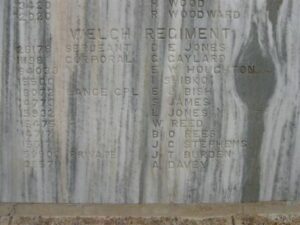
David John Jones, Private, 6673, Royal Warwickshire Regiment. David was the son of William and Elizabeth Jones, of Wemant House, Ammanford Road, Llandybie, and enlisted at Carmarthen into the Welsh Regiment. He subsequently transferred into the 2/7th Battalion, Royal Warwickshire Regiment, which was attached to 182 Brigade 61st Division. The Division moved to France in May 1916, and fought in Flanders at the disastrous attack on Fromelles. David was Killed in action here, eleven days before the main attack on 8 July 1916, aged 25. He is buried in Pont-Du-Hem Military Cemetery, La Gorgue, France. The 4th Australian Division, and the 61st Division were to attack here over open fields on 19 July 1916, and were decimated. Most of the remains of the men were buried in a mass grave at V.C. Corner Cemetery, but the remains of over a hundred men killed in the battle have recently been discovered, and re-interred at Pheasant Wood Military Cemetery, Fromelles.

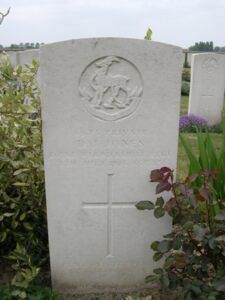
Francis Owen Jones, Private, 13211, Royal Welsh Fusiliers. Francis, known as Frank, was the son of Owen and Elizabeth Jones, of Llanddeiniolen, Caernarvonshire. He had moved to Llandybie at some time prior to 1911, along with his brother-in-law Owen Huxley Thomas, and his sister, Mary Eliza Thomas, and they all lived at Gwynfa, Campbell Road, Llandybie. Frank enlisted at Ammanford on 1 September 1914 into the 9th Battalion, Royal Welsh Fusiliers. The battalion moved to France in July 1915 attached to 58 Brigade, 19th Division, and moved to positions north of Loos. Frank had only been in France for three months, when ill health forced him to return home, and he died in Llandybie on 27 May 1916, aged 23. Frank was buried with full military honours in Llandybie (St. Tybie) Churchyard. Evidence of his service and death have recently been forwarded to the CWGC by myself, and Francis was accepted for commemoration by the CWGC on Thursday 12 February 2015, after almost 99 years of being forgotten.
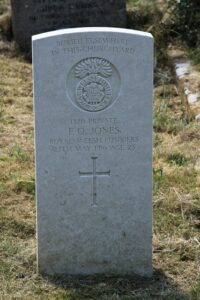
James Arthur Jones, Captain, South Wales Borderers. James was the son of the Rev. James Jones and of Mrs. Jane Jones. His father had been the Vicar of Llandybie for several years, prior to retiring to Hill Cottage, Heywood Lane, Tenby. He was commissioned into the 10th Battalion, South Wales Borderers, part of 115 Brigade, 38th (Welsh) Division. In the summer of 1915 the Battalion moved with the remainder of the Welsh Division to Morn Hill Camp, Winchester, where it completed its training and equipping, and embarked for France from Folkestone on 5 December 1915, disembarking at Boulogne the same day. During the winter and spring of 1916 the Battalion held the line in French Flanders, and then moved south to the Somme, where they fought at Mametz Wood. After a year in reserve, they fought at Pilckem Ridge and Langemarck in Third Ypres, and were back on the Somme in 1918 facing the German Offensive. After playing a leading role in pushing the Germans back in late 1918, James was Killed in action on 8 October 1918, aged 28, during the Battle of Cambrai. He is buried in Guizancourt Farm Cemetery, Gouy, France.
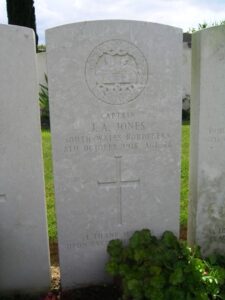
John Jones, Sergeant, 686, Princess Patricia’s Canadian Light Infantry. John was born at Golden Grove on 23 March 1890, the son of Benjamin and Ann Jones. The family later lived in Llandybie. John served prior to the war in the Middlesex Regiment, but then emigrated to Canada, where he was one of the first to enlist, on 20 August 1914, into the Princess Patricia’s Canadian Light Infantry. The PPCLI sailed from Quebec on 27 September 1914, and after a few days in England moved to France on 21 October. They moved to trenches near Ypres, at Dickebusch, attached to the 27th Division, and fought at St. Eloi and Second Ypres, and in December, 1915 they joined the newly formed 7th Canadian Brigade, 3rd Canadian Division. They fought with the Division at Mount Sorrel in June 1916 before moving to the Somme, where they fought at Flers, Thiepval and Le Transloy, where John was wounded. He was brought back to the Base Hospital at Wimereux, where he Died of wounds on 13 October 1916, aged 23. He is buried in Wimereux Communal Cemetery, France.
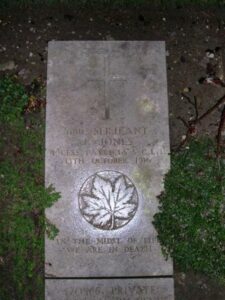
John Jones, Private, 20819, Welsh Regiment. John was born at Lampeter in 1896, the son of Mary Jones. The family resided at 4, Dogsbrook Terrace, Saron prior to the war. John worked as a collier at Llandybie prior to enlisting at Rhyl into the 15th Battalion, Welsh Regiment, which was known as the Carmarthen Pals battalion, attached to 114 Brigade, 38th (Welsh) Division. On 2 December 1915 the battalion moved to France, and the entire Division moved to the Fleurbaix sector, where it was initiated into trench warfare. On 9 March 1916, the 15th Welsh were holding the La Pannerie sector, near Cuinchy, when the Germans exploded three underground mines in their lines. John was one of seven men killed that day, with many more wounded. He was 19 years old, and is buried at Guards Cemetery, Windy Corner, Cuinchy, France.
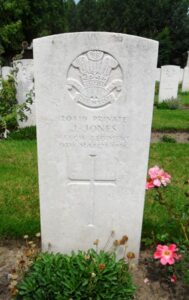
Benjamin Alfred Lewis, Second Lieutenant, Kings Own Yorkshire Light Infantry. Benjamin was the son of John and Mary Lewis, of Bryn-Y-Wawr, King’s Road, Llandybie. He was commissioned into the 2nd Battalion King’s Own Yorkshire Light Infantry, which was part of 97 Brigade, 32nd Division. The Division had fought on the Somme in 1916, and followed the German retreat to the Hindenburg Line before fighting at the Battle of Arras in Spring, 1918 when the German Offensive targeted the ancient City. They fought during the Battle of Amiens, where the Germans were stopped on 8 August 1918, and from then on took the offensive pushing back from Albert towards Bapaume and the Hindenburg Line. After the Hindenburg Line was broken, the Division crossed the Sambre, which is where Benjamin was Killed in action on 8 November 1918, just three days before the end of the war. He was 23 years old, and is buried at Avesnes-Sur-Helpe Communal Cemetery, France.
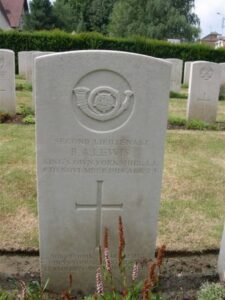
David William Lewis, MM, Driver, 2827, Royal Field Artillery. David was born at Penrheol, Llandybie on 15 July 1893, the son of John and Jane Lewis, of Bank, Pentregwenlais, Llandybie. He was a Colliery Worker, and enlisted at Ammanford into the Royal Field Artillery, serving in ‘D’ Battery, 64 Brigade, attached to the 12 (Eastern) Division. The Division moved to France at the end of May 1915 and fought at the Battle of Loos, the Hohenzollern Redoubt and on the Somme in 1916, attacking on 2 July at Ovillers. They fought at Pozieres, and then moved to Arras, taking part in the Battles of the Scarpe. The Division remained at Arras throughout 1917, but David was wounded during the Battle of Passchendaele, and Died of wounds at the 44th Casualty Clearing Station on 28 October 1917, aged 25. He is buried at Nine Elms British Cemetery, Belgium. He was the holder of the Military Medal, for gallant and distinguished service in the field.
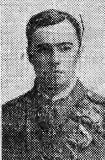
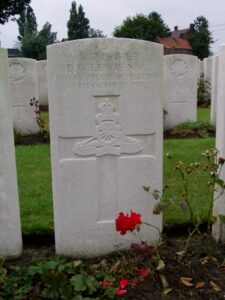
Thomas John Morgan, Private, 20975, Welsh Regiment. Thomas was the son of David Caleb Morgan and Louisa Morgan, of Bethel, Gorsddu Road, Penygroes, but resided in Llandybie prior to the war. He enlisted into the 15th Battalion, Welsh Regiment, known as the Carmarthen Pals, which formed part of 114 Brigade, 38th (Welsh) Division. In the summer of 1915 the Battalion moved with the remainder of the Welsh Division to Morn Hill Camp, Winchester, where it completed its training and equipping, and embarked for France from Folkestone on 5 December 1915, disembarking at Boulogne the same day. During the winter and spring of 1916 the Battalion held the line in French Flanders, and then moved south to the Somme, where they fought at Mametz Wood. Here they suffered terrible casualties, and Thomas was wounded during the latter stage of the Battle. He was brought to the Casualty Clearing Station at Heilly, where he Died of wounds on 14 July 1916, aged just 20. He is buried in Heilly Station Cemetery, Mericourt-L’Abbe, France. Thomas is not commemorated at Llandybie.
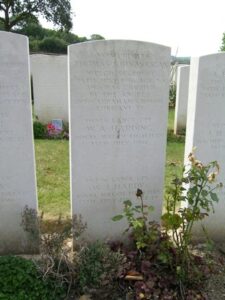
Arthur Morris, Private, 17520 Royal Welsh Fusiliers. Arthur was the son of David and Ann Morris, of Llandybie, and was a miner by trade. He enlisted at Carmarthen into the 1st Battalion Royal Welsh Fusiliers, which landed at Zeebrugge on 7 October 1914, attached to 22 Brigade, 7th Division. Antwerp had already fallen, and so the Division moved south, being the first to occupy Ypres, and entrenched east of the ancient City, where they helped stem the German Offensive here during the Battle of First Ypres. The Division fought the advancing German army to a standstill at Ypres, and all the units suffered grievous losses. It was not until the following January/February that it was once more in a complete enough condition to be considered at full fighting strength, and it was moved into the line at Neuve Chapelle, where it fought during the Battle there. They then took part in the Battles of Aubers and Festubert, and later moved to Loos, after a spell near Bethune, and they fought at the Battle of Loos. Arthur was wounded during May 1916, and was transported to Corbie in the Somme Valley, where he Died of wounds on 26 May 1916, aged 28. He is buried there at La Neuville Communal Cemetery, Corbie, France.
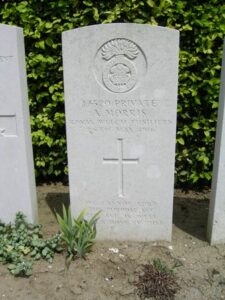
Denis O’Dwyer, Private, 9156, Irish Guards. Denis was born in Limerick but resided at Hillside View, Pentregwenlais, Llandybie prior to the war. He enlisted at Ammanford into the 1st Battalion, Irish Guards. At the outbreak of war the Irish Guards were attached to 4 Guards Brigade, 2nd Division, and were among the first units in France, fighting at the Battle of Mons, and taking part in the retreat south towards the Marne, where the Germans were held. They helped push the Germans back north towards the Aisne, before being moved to Ypres, where they fought at First Ypres. After spending the Winter of 1914/15 in Flanders, they fought at the Battle of Festubert, and moved South to Loos where they moved to 1st Guards Brigade, Guards Division on 20 August 1915, fighting at the Battle of Loos, and at the Hohenzollern Redoubt. They moved south again, taking part in the Battle of Flers-Courcelette, and it was here that Denis was Killed in action on 17 September 1916, aged 27. He is commemorated on the Thiepval Memorial, France.
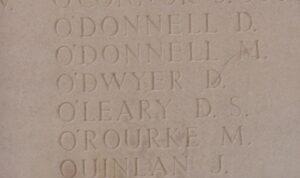
Thomas O’Hanlon, Private, 6801, Royal Munster Fusiliers. Thomas was the son of Patrick O’Hanlon, of Newmarket, Co. Cork. Thomas was an army reservist, and had originally enlisted into the 2nd Battalion, Royal Munster Fusiliers on 31 August 1901. He had served for six years before transferring to the army reserve on 26 January 1906. He then lived at 10, Woodfield Road, Llandybie and married Nellie Corbett at Llandeilo Registry Office on 6 January 1912. Their daughter Elsie May O’Hanlon was born there on 28 April 1913. Thomas rejoined the battalion after being mobilised on 6 August 1914. The battalion crossed to France on 14 August 1914 attached to 3 Brigade, 1st Division, and joined the BEF, taking part in the retreat from Mons. Thomas was posted as missing, believed killed in action during the famous Rearguard Affair of Etreux on 27 August 1914, aged 32. He is buried in Etruex British Cemetery, France.
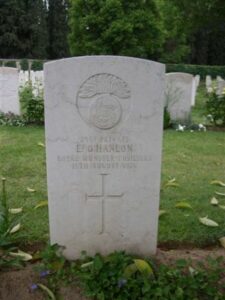
Ivor Owens, Private, 17521, Royal Welsh Fusiliers. Ivor was the son of Herbert and Rachel Owens, of Maesycoed, Llandybie. He was a collier prior to enlisting at Carmarthen into the 10th Battalion, Royal Welsh Fusiliers, which was attached to 76 Brigade, 3rd Division. The 10th Royal Welsh Fusiliers had landed at Boulogne on 27 September 1915 and saw their first action at Ypres, around the Bluff and St. Eloi area. On 1 March 1916 the brigade relieved the 52nd Brigade in the trenches at The Bluff, and the 10th RWF moved into trenches at and in the rear of Gordon Post. At 4.30 am the following morning the battalion attacked the German positions at The Bluff which had previously been lost by the 17th Division. The operation was a success and the men dug into their newly captured positions, but suffered heavily from artillery fire throughout the day. Ivor was one of many men killed in action here on 2 March 1916. He was 21 years old, and is commemorated on the Ypres (Menin Gate) Memorial, Belgium. On the following morning a German shell crashed into the 10th RWF HQ dugout, killing the CO and his staff.

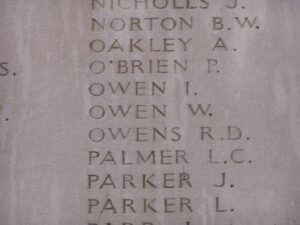
Walter Albert Pearman, Private, 203551, Norfolk Regiment. Walter was born in Marham, Norfolk, the son of Robert and Sarah Pearman, of Thistle Hill, Hilgay, Downham Market, Norfolk. He had been a farm labourer prior to moving to Llandybie, where he became a well-known Wesleyan preacher. He enlisted at Ammanford into the army and was posted to the 9th Battalion, Norfolk Regiment, his home Regiment. The Battalion formed part of 71 Brigade, 24th Division, and landed at Boulogne on 25 May 1915. On 11 October 1915 the Brigade transferred to the 6th Division, and fought at the Battles of Flers-Courcelette, Morval and Le Transloy during the Somme Offensive. In late April 1917 they were near Arras, taking part in the Battle of Arras, and in the subsidiary Battle of Hill 70. On 1 May 1917 the 9th Norfolk’s were in the front-line trenches near Loos. C Company of the battalion were resting in two deep dugouts in their trench when the Germans opened up a brief artillery barrage onto their line, collapsing the dugout entrances. Despite struggling for hours to rescue the trapped men, the survivors were unable to re-open the dugouts, and withdrew from the trenches that night after having suffered the loss of one officer and sixteen men wounded and twenty more killed. Walter was one of the men trapped forever in one of the dugouts that day. He was 25 years old and is commemorated on the Loos Memorial, France.
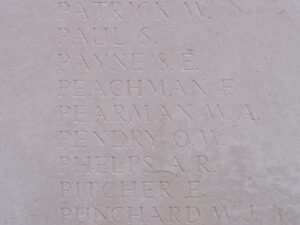
Ivor Powell, Private, 4214, Welsh Regiment. Ivor was the son of Mary Anne Powell, of Sunny Hill, Llandybie. He enlisted at Ammanford into the 1/4th Battalion, Welsh Regiment, which was attached to 159 Brigade, 53rd (Welsh) Division. The Division landed at Suvla, Gallipoli on 8 August 1915, and were immediately plunged into battle. To give some idea of the chaotic conditions on the battlefield, Ivor was reported to have been wounded on 10 August 1915, and was later reported as missing. No trace of him was ever found, so he was later declared as being killed in action on that date. He was 19 years old and is commemorated on the Helles Memorial, Gallipoli.
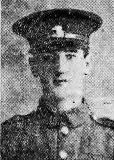
Albert Quinn, Private, 12395, Royal Welsh Fusiliers. Albert was born in Bristol, the illegitimate son of Mary Anna Quinn. Mary married Walter Henson in 1903, and the couple moved to 36, Colonel Road, Betws prior to 1911. Albert resided at Llandybie prior to the war, and enlisted at nearby Ammanford into the 2nd Battalion, Royal Welsh Fusiliers, which was attached to 19 Brigade. The battalion landed at Rouen on 11 August 1914, and had fought during the retreat from Mons to the Marne. After the Battle of the Aisne the battalion transferred to the 6th Division, and fought with them at Hooge, before moving to the 27th Division in May 1915, fighting with them at Second Ypres. On 19 August 1915 they transferred to the 2nd Division, and were in the Bethune Sector over the winter of 1915/16, holding the line through Cambrin-Cuinchy-Givenchy. Albert was Killed in action here by a German trench mortar shell, on 27 January 1916. He is buried at Cambrin Military Cemetery, France.
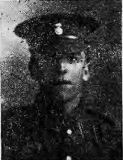
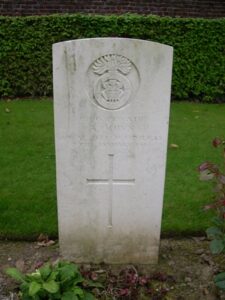
David John Rees, Private, 13188, Royal Welsh Fusiliers. David was the son of John and Elizabeth Rees, of Caehelyg, Penygroes. He worked at the Cae’rbryn Colliery prior to enlisting at Ammanford into the 10th Battalion, Royal Welsh Fusiliers, which was attached to 76 Brigade, 3rd Division. The battalion had landed at Boulogne on 27 September 1915, and saw their first action at Ypres, around the Bluff and St. Eloi area, and in October transferred to the 3rd Division with the Brigade. The Division fought during the Battle of the Somme in July 1916, and David was killed in action while acting as a stretcher bearer during the Battle of Delville Wood on 20 July 1916, when he was struck in the head by shrapnel. He was just 20 years old and is commemorated on the Thiepval Memorial, France.

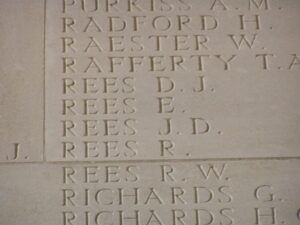
John Rees, Corporal, 11454, Grenadier Guards. John was the son of David and Ann Rees, of Reform Cottage, Bryncrug, Tywyn. He had served during the Boer War of 1899-1902 prior to moving to Llandybie to work for the Post Office as a letter carrier. John re-enlisted at Aberystwyth soon after the outbreak of war into the 2nd Battalion, Grenadier Guards. He joined the battalion in France on 30 September 1914. The battalion was attached to the 4th (Guards) Brigade, 2nd Division, and had been among the first units in France, fighting at the Battle of Mons, and retreating southwards, where the Division took part in the Affair of Landrecies, the Rearguard Actions of Villers-Cotterets, and at the Battle of the Marne where the German offensive was stopped. The BEF then moved north to guard the Channel ports, and took up defensive positions east of Ypres. The 2nd Division then fought at the First Battle of Ypres, where the German sweep through Flanders was stopped, and remained there throughout the first winter of the war. The conditions were terrible, and John was hospitalised in February 1915 after falling ill. Upon his recovery, he was posted to the 1st Battalion, Grenadier Guards on 7 March 1915. The battalion was at Neuve Chapelle, attached to 20 Brigade, 7th Division, and was preparing for an offensive. On 10 March 1915 the 1st Grenadiers took part in the Battle of Neuve Chapelle, which had been launched in conjunction with a French assault on Vimy Ridge. The battle proved a disaster for the Allies, with no real gains, despite suffering heavy casualties. John was killed in action at sometime between 10 to 14 March 1915. The 32-year-old has no known grave and is commemorated on the Le Touret Memorial, Richebourg L’Avoue, France. He is also commemorated on the Tywyn and the Llandybie memorials.
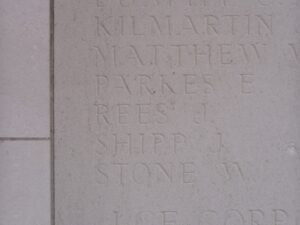
William Rees, Private, 1948, Welsh Guards. William was the son of Charles and Winifred Rees, of 24, Exchange Road, Neath. He resided at Llandybie prior to the war, and enlisted at Ammanford into the 1st Battalion, Welsh Guards. On 18 August 1915 the Battalion joined 3 Brigade, Guards Division in France, and the Division fought through the Battle of Loos. They remained in the Loos sector over the coming months, before moving south to the Somme. William was killed at the Battle of Flers-Courcelette on 16 September 1916, aged 33. He is buried in Serre Road Cemetery No. 2, France which is the biggest cemetery on the Somme.
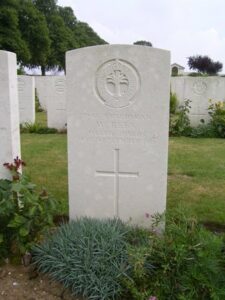
David Curtis Richards, Private, 17511, Royal Berkshire Regiment. David was born in Llandybie in 1890, the son of David Jacob Richards and Mary Ann Richards. Just before the war the family had moved to Barley Mow Hotel, Market Street, Llanelli. David worked as a shop assistant at Llanelli prior to enlisting at Brecon into the 3rd Battalion, South Wales Borderers on 24 January 1914. He then left the battalion and transferred to the Army Service Corps on 8 April 1914, but just six weeks later was discharged after being deemed as being unsuitable to serve in the Corps. David then re-enlisted at Lewes in Sussex, under the assumed name of David Curtis, into the 6th Battalion, Royal Berkshire Regiment, which was attached to 53 Brigade, 18th (Eastern) Division. The Division landed at Boulogne on 25 May 1915, and moved to the Somme area for trench initiation and training. The division moved to Bouzincourt by 3 August, then the 6th Berkshire’s marched to Daours for training before marching to Bray and on 22 August finally moved into the line near the village of Mametz to begin their first tour in the trenches. After several spells here the battalion moved into the trenches at La Boiselle the following month. David was then among a group of men temporarily sent to assist the 178th Tunnelling Company, Royal Engineers, which was busy tunnelling under the German lines to lay mines in preparation for the forthcoming Somme offensive. David was killed underground when the Germans blew a counter-mine on 20 October 1915. The body of the 25-year-old was recovered and he was buried in Norfolk Cemetery, Becordel-Becourt, France. David is not commemorated at Llandybie.
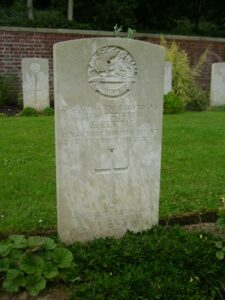
John Roberts, Private, 14986, Royal Welsh Fusiliers. John was the son of David and Ann Roberts, of Penygroes and the husband of Lettice Roberts, of 2, Caerbryn Terrace, Llandybie. He worked as a Collier at Cae’rbryn Colliery prior to enlisting at Ammanford into the 10th Battalion, Royal Welsh Fusiliers, who were attached to 76 Brigade, 3rd Division. The battalion had landed at Boulogne on 27 September 1915, and saw their first action at Ypres, around the Bluff and St. Eloi area. In October they transferred to the 3rd Division with the Brigade. The Division were in the Ypres area in December 1915 when John was Killed in action, aged 35, on 17 December 1915. He is buried in Hedge Row Trench Cemetery, Belgium.
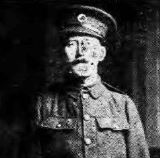
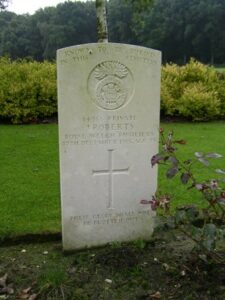
Morley Roberts, Private, 290449, Pembroke Yeomanry. Morley was the son of Samuel and Rachel Roberts, of Llywynyrhaf Fach, Betws. Morley doesn’t seem to have served overseas, but remained on Home Service with the Pembroke Yeomanry. He was working as a colliery haulier prior to the war. He became ill after suffering an intestinal haemorrhage which caused him to fall into a coma and died on 25 July 1917 at Llwynyrhaf-Fach, aged 23. He was serving with the 3/1st Pembroke Yeomanry at the time he fell ill, but is impossible to prove whether or not he is eligible for commemoration as his service papers do not survive and his case has been rejected. The whereabouts of his grave is as yet unknown, as he is not commemorated by the Commonwealth War Graves Commission. Morley is listed on the County War Memorial roll, but is not on the Llandybie War Memorial.
Walter Rochford, Driver, 3585, Royal Field Artillery. Walter was born in London the son of James and Elizabeth Rochford, and the Husband of Anne Rochford (Formerly Davies), of Kenwyn Cottage, Ffairfach, Llandeilo, Carmarthenshire. Walter had worked at the Cae’rbryn Colliery prior to enlisting at Ammanford into the Royal Field Artillery, and served as a Driver in 84 Brigade, who were attached to the 18th (Eastern) Division. The Division landed in Boulogne on 25 May 1915, and fought throughout the Somme Offensive of 1916, capturing Trones Wood, the Schwaben Redoubt and Regina Trench, and followed the German retreat to the Hindenburg Line, before fighting at Arras in the Battles of the Scarpe. They then moved North to Ypres, and fought at the Battles of Pilckem, Poelcappelle and Langemark, and it was during this time that Walter was wounded and brought back to the Casualty Clearing Station at Dozinghem. He Died of wounds on 9 October 1917, aged 40, and is buried at Dozinghem Military Cemetery. He was the Brother in law of Daniel Davies of Llandeilo who also fell.
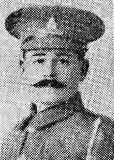
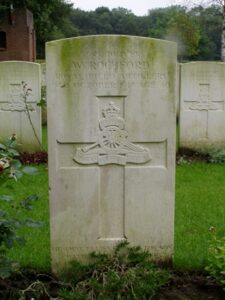
Gerald Cameron Southern, Lieutenant, Indian Army. Gerald was born in March 1882, the son of Francis Gerald and Alice Mabel Southern, of Llandybie. The family later moved to Coombe Keynes, Wareham, Dorset. He was educated at Clifton College, Bristol, where in successive years he captained the school Cricket XI, and the Rugby XV. Gerald was commissioned in August 1912 into the Indian Army, and served with the 53rd Sikhs. He died of wounds received at Gallipoli on 21 July 1915. Gerald was 23 years old, and is buried at Maala Cemetery, Yemen. Gerald is not commemorated at Llandybie.
Frederick Watcin Bernice Spary, Lance Corporal, L/15908, Middlesex Regiment. Frederick was born in Ynysybwl, the son of Egbert Arthur Spary and Agnes Magdalen Spary, of Craigamaster, Newchurch West, Newport, Mon. He lived at Llandybie prior to the war and enlisted at Llanelli into the 2nd Battalion, Middlesex Regiment, attached to 23 Brigade, 8th Division. The Division moved to the Western front in November, 1914, and saw action during the Battle of Neuve Chapelle, and at Aubers Ridge. They took part of the Action of Bois Grenier, a diversionary attack for the Battle of Loos, before moving South to prepare for the forthcoming Somme Offensive. The Battalion were at Aveluy by 10 May 1916, where they carried out a raid to probe the German lines. They remained on the Somme, and took part in the latter stages of the Battle of Albert, and it was after this, probably during the Battle of Le Transloy, that Frederick was killed in action on 23 October 1916, aged 19. He is buried at Bancourt British Cemetery, France.
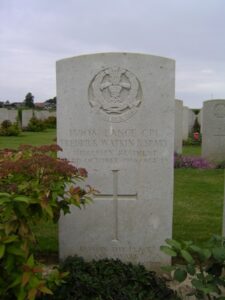
Walter Spence, Gunner, 174233, Royal Garrison Artillery. Walter was the son of George and Elizabeth Spence, of Enderby, Leicester. He resided at Penllwynhelig, Llandybie prior to the war and enlisted at Ammanford into the Royal Garrison Artillery, becoming a Gunner with their 179th Siege Battery. The 179th Siege Battery embarked for the Western Front on the 8 October 1916 from Southampton to Havre. They were a 6 in Howitzer Battery, with four 6-inch Howitzers, and by 20 October were in position at Ypres, where they remained for several months. Such was the severity of the action they encountered that by the end of November the Battery was down to first three, and then only two usable guns. They moved down South towards Arras, and were in that sector when it was hit by the storm of the German Spring Offensive of 21 March 1918. Walter was killed in action soon after, on 28 March 1918, aged 28. He is buried in Cabaret-Rouge British Cemetery, Souchez, France.
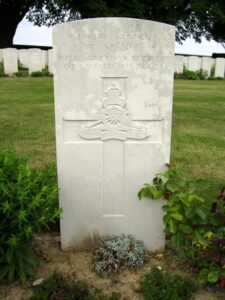
David Thomas, Sergeant, 3807, Welsh Regiment. David was the son of William and Mary Thomas, of Pantyllyn Terrace, Llandybie, and the husband of Annie Thomas, of 5, Dynevor Terrace, Penybank, Ammanford. He enlisted at Ammanford into the 1/4th Battalion, Welsh Regiment, which was attached to 159 Brigade, 53rd (Welsh) Division. The Division landed on Gallipoli on 8 August 1915, and was plunged into desperate fighting. David was killed in action on 10 August 1915, aged 32. He is commemorated on the Helles Memorial, Gallipoli. David is not commemorated at Llandybie.
Robert Newton Thomas, Gunner, 72135, Royal Garrison Artillery. Robert was the son of John and Ann Thomas, of London House, Llandybie. He married Mary Annie Thomas at Llandeilo on 26 December 1916 whilst on leave, and Mary set up the family home at 83, Marble Hall Road, Llanelli, where their son Clifford Newton Thomas was born on 21 October 1916. Robert had enlisted at Llanelli on 31 February 1916 into the Royal Garrison Artillery, and was posted to 28 Company, RGA at Portland. He spent almost a year at Bordon before being posted to France, first with the 367th Siege Battery. During August 1917 Robert became ill and spent almost eight weeks in hospital, before being re-posted to the 182nd Siege Battery. He was killed in action during the Third Battle of Ypres, on 29 November 1917, aged 29, and is buried in Menin Road South Military Cemetery, Belgium.
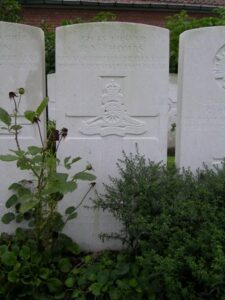
Thomas Thomas, Corporal, 2818, Royal Field Artillery. Thomas was the son of David and Sarah Thomas, of Llandybie. He had worked at the Llandybie Colliery prior to enlisting at Shorncliffe into the Royal Field Artillery, becoming a Gunner with their ‘D’ Battery, 63rd Brigade, attached to the 12th (Eastern) Division, which had moved to France at the end of May, 1915. They moved to the Steenwerck area to familiarise into trench warfare, then took over the line at Ploegsteert. They then moved south, fighting at the Battle of Loos and fought in the action at the Hohenzollern Redoubt, and moved out of the area on 26 April 1916. They then took part in the opening of the Somme Offensive, at the Battle of Albert. They remained on the Somme until moving to Arras on 19 October, and held the line there until having a months rest at the end of December. They returned to the line at Arras, and took part in the Battle there, of the Scarpe and Arleux, and remained there until moving towards Cambrai, where they attacked on 20 November as part of the main Battle. In January, 1918 they relieved the 38th (Welsh) at Fleurbaix, and when the German Offensive was launched on the Somme, where rushed South by truck to Albert, arriving on 24 March. After suffering heavily during the German attacks that followed, the Division had a brief spell of rest at Warloy, but moved back into the line on 2 April. Thomas was Killed in action here on 14 April 1918, aged 34, and is buried at Contay British Cemetery, Contay, France.
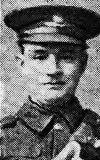
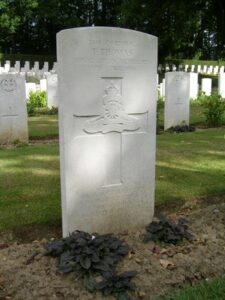
William John Thomas, Sapper, 166942, Royal Engineers. William was the son of Thomas and Mary Thomas, of Arwel, Penygroes. He ran his own furniture and cabinet-making business at Llandybie prior to enlisting at Cardiff on 7 December 1915 into the Royal Engineers, and landed in France on 9 November 1916, joining the 207th Field Company, which was attached to the 34th Division. The Division moved to France in January 1916, and fought at the Somme in 1916, where it attacked on the first day at La Boiselle. They remained there over the Winter and moved North to Arras where they fought at the Battles of the Scarpe and at Arleux. They were hit by the German Spring Offensive, and it was during the turbulent times that followed that William was killed in action by a stray shell on 24 July 1918, aged 28. He is buried at Raperie British Cemetery, Villemontoire, France.
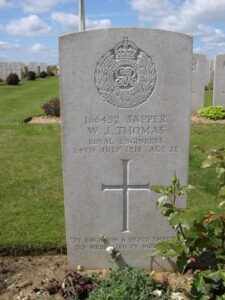
William Watts, Private, 1051, Welsh Regiment. William was born at Barnstaple, Devon in 1888, and resided in Llandybie prior to the war. He enlisted at Carmarthen into the 1/4th Battalion, Welsh Regiment. The Battalion moved to Gallipoli attached to 159 Brigade 53rd (Welsh) Division, but they had a second-string Battalion at home. This battalion was originally designated the 2/4th Welsh, and was used for supplying reserves, and carrying out Garrison Duties at Pembroke Dock. William became ill, and died of sickness on 13 August 1915, aged 27. He is buried at Pembroke Dock Military Cemetery.
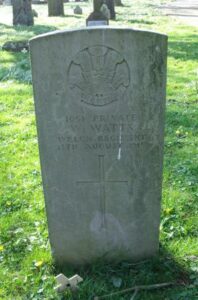
David Thomas Williams, Private, 7556 Australian Imperial Force. David was the son of Jonah Edward Williams and Anne Williams, of Maesyffynon House, Llandybie. He had emigrated to Australia prior to 1911, and worked as Head Gardener at Government House, Perth. David enlisted at Perth on 10 June 1916 into the 51st Battalion, Australian Infantry. He embarked at Perth on 29 June 1917, with the 25th Reinforcements for the battalion, bound for Europe. On 25 August 1917, he arrived at Plymouth, and on 27 March 1918 joined his Battalion in the field, as part of the 13 Brigade, 4th Australian Division. At this time the Australian Corps were in Flanders, and the 4th Australian Division was rushed to the Somme to help stem the German Offensive, fighting at Hebuterne and Dernancourt. David was Killed in action on 25 April 1918, aged 28 during the Battle of Villers-Brettoneux. He is buried in Adelaide Cemetery, Villers-Brettoneux, France.
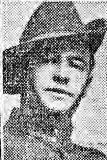
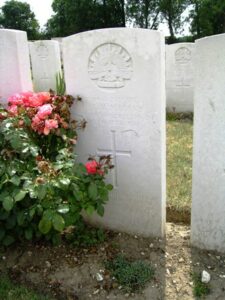
John Henry Williams, Private, M/287507, Royal Army Service Corps. John was the son of John and Sarah Williams, of Tynewydd, Carmel. He enlisted into the Army Service Corps on 5 February 1917 as a Driver, and was posted to Grove Park, Middlesex. John had only been in the army for five weeks when he took ill, and died of pneumonia at the Military Hospital at Hounslow, Middlesex on 9 March 1917, aged 24. He was brought home and buried with full military honours in Carmel Baptist Chapelyard & Extension. His younger brother Idwal was taken prisoner by the Germans in April 1918, but survived the war. John is not commemorated locally.
Gavin Wilson, Private, 20675, Royal Welsh Fusiliers. Gavin was born in Burnbank, Lanarkshire, the son of John Wilson, and was the Husband of Lucy Wilson, of 18, Grange Road, Buxton, Derbyshire. He resided at Penpound, Llandybie prior to the war, and enlisted at nearby Ammanford during January 1915 into the 14th Battalion Royal Welsh Fusiliers, which was attached to 113 Brigade, 38th (Welsh) Division. The Division had landed in France during December 1915 and had been initiated into trench warfare near Armentieres, and moved to the Somme in June 1916, preparatory to attack the formidable Mametz Wood. The first attacks went in on 7 July 1916, but was met with heavy machine-gun fire, and failed, and it wasn’t until 10 July 1916 that the attack resumed on the wood. Gavin was Killed in action that day, on 10 July 1916. He was 35 years old, and is commemorated on the Thiepval Memorial, France. Gavin is not commemorated at Llandybie.
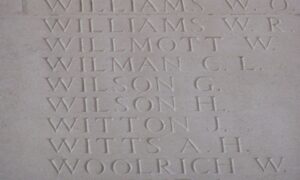
World War Two, 1939-1945
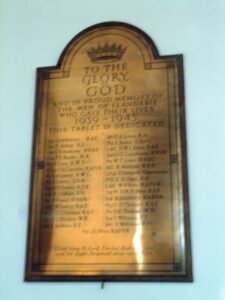
Leo Vernon Anthony, Sergeant, 1313259, Royal Air Force Volunteer Reserve. Leo was the son of John Watkin Anthony and Griselda Maud of Llandybie, and the husband of Una Anthony, of Swansea, and he served in 153 Squadron, RAF. The squadron formed on 24 October 1941 at Ballyhalbert, from ‘A’ Flight of No 256 Squadron, which had moved there on 14 October from Squires Gate. It operated Defiant’s on night fighter duties until May 1942 but in December, a Blenheim arrived for training and in January the process of converting the squadron onto Beaufighter’s began in earnest. The squadron continued to provide night defence of Northern Ireland until December when it moved to North Africa, where the squadron provided night cover to Allied forces as well as providing protection to convoys from a range of advanced bases. Leo was serving at one of these advanced bases at Malta when he was killed on 23 June 1943, aged 23. He is commemorated on the Malta Memorial.
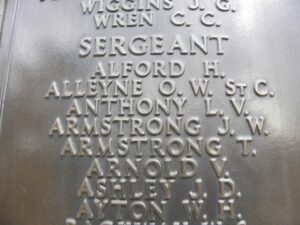
Francis Ashby, Sapper, 14248183, Royal Engineers. Francis was the son of William and Margaret Ashby, and the husband of Beatrice Mary Sophia Ashby, of Llandybie. He served in 857 Quarrying Company, Royal Engineers, and died at home on 4 December 1942, aged 25. He is buried at Llandybie (St. Tybie) Churchyard.
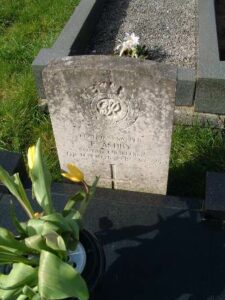
Oswald Morgan Atkins, Sergeant, 1317866, Royal Air Force Volunteer Reserve. Oswald served in 100 Squadron RAF which had been stationed in Singapore at the outbreak of war, where it was decimated during the Japanese attacks. On 15 December 1942 the Squadron reformed at RAF Waltham (Grimsby), and were equipped with Lancaster’s. On 17 August 1943, over 590 aircraft of RAF Bomber Command took off from bases over the UK, with the mission of bombing the V2 Rocket facility at Peenemunde. The mission was a success, but 40 aircraft were intercepted and shot down by German night-fighters on the return home, one of which contained Oswald. He was killed in action on 18 August 1943, and is commemorated on the Runnymede Memorial.
Phillip Eynon Banks, Gunner, 14605545, Royal Artillery. Phillip was the son of Henry Charles and Eveline Muriel Banks, of Llandybie, and served in the 62nd Anti Tank Regiment, Royal Artillery. Phillip landed with his unit, 1st Corps, on D-Day, 6 June 1944, on Juno beach, and as part of 1st Corps was attached to the 3rd Canadian Division. It consisted of 245 and 248 batteries with M10 self propelled 17 pounder anti-tank guns, and 246 and 247 batteries which were equipped with 17 pounder ‘towed’ guns, and had the bad luck to come up against the 12th SS Panzer unit (Hitler Jugend) in the region of Caen and Carpiquet airport. Phillip was killed in action not long after the landings, on 11 June 1944, aged only 19. He is buried in Bayeux War Cemetery, France.
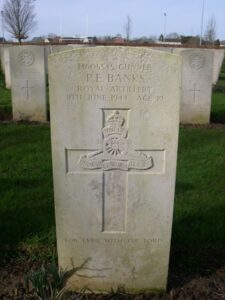
Frederick Cave, Corporal, 3958823, Royal Fusiliers. Frederick was the son of Frederick and Rachel Cave, of The Crossing, Llandybie, and the husband of Mary Alex Cave, of Banbridge. He served in the 16th Battalion, Royal Fusiliers, but died on active service in Northern Ireland on 27 May 1941, aged 29. He is buried in Banbridge Town Cemetery, Northern Ireland.
Evan Kenneth Corcoran, Sergeant (Flight Engineer), 1837176, Royal Air Force Volunteer Reserve. Evan was born at Llandybie in 1917, probably the son of Michael Corcoran, a collier from Ireland who lived at Rawlings Road, Llandybie. He served in 178 Squadron, Royal Air Force which had been formed from a detachment of No 160 Squadron at Shandur on 15 January 1943. It was equipped with Liberators and began bombing operations immediately. Moving to Libya in March the squadron carried out missions against targets in North Africa, Italy and the Balkans as well as carrying out supply dropping mission to Northern Italy and Poland. The squadron moved to Italy in March 1944 and continued to operate from there until the end of the war. Evan must have been killed whilst on a mission over Belgrade on 6 November 1944, aged 26, and is buried at Belgrade War Cemetery along with his crew-mates.
Benjamin Rees Davies, Fusilier, 4196914, Royal Welch Fusiliers. Benjamin was the son of John Rees Davies and Martha Davies, of Saron, and served in the 1st Battalion Royal Welch Fusiliers. The Battalion had suffered terribly during the German invasion of France, and the remnants were evacuated from Dunkirk. Back in the U.K., it was brought back up to strength by drafting in men from other Battalions of the R.W.F., and in 1942 they sailed to the Far East to face the Japanese invasion. After a brief stop in Cape Town they arrived in India in the summer of 1942 and were employed in quelling the rebellion there at first. After some training in amphibious landing, the Battalion was sent to Burma, landing on Akyab Island. In March 1943 they moved to Donbaik where they had their first taste of battle against the Japanese. After suffering heavily, they managed to evade encirclement and were pulled out of Burma back to India, where they rebuilt and underwent further training. In 1944 the Japanese crossed the Chindin River in Burma, and were advancing on Imphal and Kohima. The R.W.F., as part of 6 Brigade, 2nd Division, were rushed to the area during April, where they met the Japanese head on, finally winning the battle, but Benjamin was Killed here on 17 April 1944, aged 25, and is commemorated on the Rangoon Memorial.
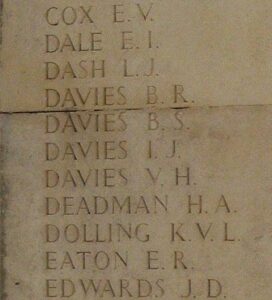
Evan Davies, Private, 6096843, The Queens Royal Regiment (West Surrey). Evan was the son of David John and Hannah Jane Davies, of Saron, and served in the 1/7th Battalion, Queens Royal Regiment. The Battalion was part of 131 (Queens) Lorried Infantry Brigade, originally, part of the 44th (Home Counties) Infantry Division and after ‘mobilisation’ in late August 1939 it was originally stationed in and around Guildford, Surrey. It consisted of 1/5th Bn., 1/6th Bn. and 1/7th Bn. Queen’s Royal Regiment. Later in 1939 hard training followed in Dorset and then the Brigade was out on standby to move to Finland, but this did not materialise. The King inspected the 44th (Home Counties) Division in February 1940 and on 2 April the Brigade, embarked at Southampton for Cherbourg and then formed part of the BEF (British Expeditionary Force), 1940. After being evacuated at Dunkirk the brigade was reformed and used for general guard duties, until in May 1942 large drafts were received to bring it up to war establishment. Then on 24 May 1942 it embarked for the Middle East. The convoy called at Freetown where General Sir George Gifford, Queen’s, who was then GOC West Africa, and arrived at Durban at the end of June. From there the ships in the Convoy sailed individually without escort to Aden and on to Egypt. There along with the rest of 44th Division, the brigade disembarked in Egypt early in July 1942. The Brigade trained east of Cairo until it joined the 8th Army in August 1942. Its first action was at the Battle of Alam Halfa. It then became permanently part of the 7th Armoured Division in October 1942 and remained with the Division until the end of the war. During the remainder of the North African campaign the Brigade occupied Tobruk on 12 November 1942 and Benghazi, 350 miles on, eleven days later. Evan was killed here on 24 October 1942, aged 27, and is commemorated on the Alamein Memorial.
Elwyn Arnold Davies, Aircraftman 2nd Class, 1089133, Royal Air Force Volunteer Reserve. Elwyn was the son of Thomas and Jane Davies, of Llandybie. Not much is known of his wartime service, but he served in North Africa with the RAF, as an Aircraftman, and died there on 25 June 1942, aged 21. He is buried at El Alamein War Cemetery. Elwyn is not commemorated on the Llandybie Memorial.
Harry Vincent Davies, Corporal, 7888678, Royal Armoured Corps. Harry served with the 141st Regiment, Royal Armoured Corps (The Buffs), which was the first Regiment to be equipped with the new Churchill Crocodile flame-throwing tank, as part of the 30th Armoured Brigade, 79th Armoured Division. The Division was commanded by Percy Hobart, and was equipped with a wide and strange variety of specialist tanks known as ‘Hobart’s Funnies’. The Brigade landed on D-Day as part of the support to the main infantry assault, and fought out of Normandy northwards through France and Belgium into Holland. After the abortive Battle of Arnhem, the British Army cleared the North-West corner of Holland, and moved East towards Germany. Harry was killed on 21 November 1944, near the German border, at Sittard, and is buried at Sittard War Cemetery, Netherlands.
Ronald James Davies, Able Seaman, D/JX 165549, Royal Navy. Ronald was the son of Harold and Miriam Davies, of Ammanford, and served in the Royal Navy aboard H.M.S. Gloucester. In September, 1939, Gloucester was flagship of the 4th Cruiser Squadron, serving in the East Indies and spent the rest of that year patrolling the Indian Ocean. In December, she was moved to Simonstown, South Africa where she was used, unsuccessfully, against German raiders. She was transferred again in May 1940, this time to the Mediterranean, where she experienced plenty of action. She was involved in Malta convoys and the Battle of Calabria on 9 July 1940. An Italian air attack on 8 July had hit the ship’s bridge killing or wounding most of the bridge personnel, including the Captain, F R Garside. The second half of 1940 was spent in the eastern Mediterranean and in the Aegean. On 11 January 1941, while supporting Operation Excess, Gloucester was hit by a bomb which failed to explode. In March, she was at the Battle of Matapan and, in April, performed several bombardments along the North African coast. A second bomb hit caused minor damage. Gloucester formed part of a naval force acting against German military transports to Crete, with some success. On 22 May 1941, while in the Kithera Channel, about 14 miles north of Crete, she was attacked by German Stuka dive bombers and sank, having sustained at least four heavy bomb hits and three near-misses. 723 lives were lost, with just 82 survivors. Her sinking is considered to be one of Britain’s worst wartime naval disasters. Ronald went down with the ship that day, aged just 21. He is commemorated on the Plymouth Naval Memorial, Devon.
Daniel Isaac Evans, Private, 3960739, North Staffordshire Regiment. Daniel was the son of David and Annie Evans, of Ammanford, and the husband of Emily Lucy Evans, of Saron. He served in the 2nd Battalion North Staffordshire Regiment, which were in France with the BEF at the outbreak of war, and were evacuated from Dunkirk after suffering heavy casualties in the retreat to the coast. After rebuilding in the UK the Battalion moved to North Africa, and fought at El Alamein in late 1942, then took part in the final campaign to drive the Axis forces from North Africa. The campaign began on 8 November 1942, when Commonwealth and American troops made a series of landings in Algeria and Morocco. The Germans responded immediately by sending a force from Sicily to northern Tunisia, which checked the Allied advance east in early December. Meanwhile, in the south, the Axis forces defeated at El Alamein were withdrawing into Tunisia along the coast through Libya, pursued by the Allied Eighth Army. By mid April 1943, the combined Axis force was hemmed into a small corner of north-eastern Tunisia and the Allies were grouped for their final offensive. Daniel was killed around this time, aged 26, on 29 April 1943. He is buried at Massicault War Cemetery, Tunisia.
William Alfred Farley, Leading Aircraftman, 1409468, Royal Air Force Volunteer Reserve. William was the son of Jack and Edith Farley, of Mount View, Saron, Ammanford. He married Barbara Lomax in Surrey in 1944. Not much is known of him, but he died on 23 April 1945, aged 24, and is buried at Ammanford Cemetery.
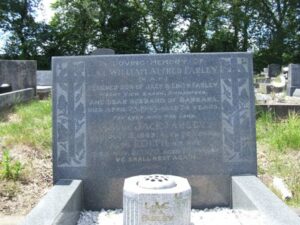
Leonard William Fox, Corporal, 3962867, Royal Fusiliers (City of London Regiment). Leonard was the son of Thomas and Mary Fox, of Llandybie, and served in the 9th Battalion, Royal Fusiliers, part of the 167th (London) Infantry Brigade, 56th (London) Division. On 3 September 1943 the Allies invaded Italy, and slowly moved North through Italy, fighting tooth and nail for every inch gained. Following the fall of Rome to the Allies in June 1944, the German retreat became ordered and successive stands were made on a series of defensive positions known as the Trasimene, Arezzo, Arno and Gothic Lines. The 56th Division were ordered to advance along the Conca Valley to capture Conce and Montescudo, and it was during this attack on 6 September 1944, that Leonard was Killed in action. He was 21 years old, and is buried in Montecchio War Cemetery, Italy. Leonard is not commemorated at Llandybie.
Dennis James Hughes, Warrant Officer, 1312982, Royal Air Force Volunteer Reserve. Dennis was the son of James and Margaret Ann Hughes, of Saron, and flew in 514 Squadron, RAF, who were equipped with the Avro Lancaster II, based at Waterbeach. On the night of 21 January 1944, Dennis took off in his Lancaster as part of a group of almost 650 bombers, bound for Magdeburg. The group was intercepted by German night fighters on the outward journey, and suffered terrible casualties. Dennis was killed that night, on the morning of 22 January 1944. He was only 22 years old and is commemorated on the Runnymede Memorial, Surrey.
Hugh Idris Hughes, Private, 3960740, Welch Regiment. Idris was the son of Thomas and Sarah Hughes of Llandybie. He married Margaret Melba Young of Greenford, Middlesex in 1942. He served in the 2nd Battalion, Welch Regiment which had been based in Agra, India at the outbreak of war. They were moved to Bombay then Bangalore in 1941, and then in February 1942 the Japanese overran Malaya and invaded Burma. The 2nd Welch was ordered to Calcutta, on route to Rangoon, but Rangoon had also been captured by then, and they returned to Madras. By March 1943 they were attached to the 19th Indian Division, as part of the famous Chindits, and from then on fought in Burma for the remainder of the war. They crossed the Sittang in early May, 1945, and it was during this period that Idris died on 1 May 1945, aged 30. He is buried in Rangoon War Cemetery, Myanmar.
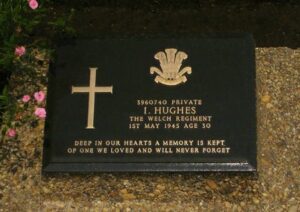
Albert Henry Humphries, Sergeant (Air Gunner), 3050220, Royal Air Force Volunteer Reserve. Albert was the son of Mrs. Alice Jared, of Llandybie, and served in 547 Squadron, RAF, which flew the B-24 Liberator VI, based at St. Eval in Cornwall, as part of RAF Coastal Command. Albert was among six men killed and two injured when their Consolidated B-24 Liberator, Serial EV881, crashed into the Preseli Mountains near Mynachlogddu on 19 September 1944. Albert was 19 years old and is buried at Haverfordwest (City Road) Cemetery.
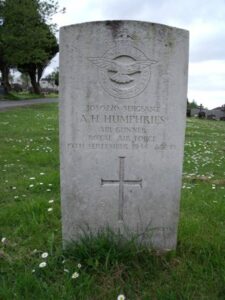
I. Jenkins, Sapper, Royal Engineers. This man cannot currently be identified.
David Wilfred Lewis Jones, Leading Aircraftman, 1709186, Royal Air Force Volunteer Reserve. David was the son of Alfred and Margaret Rosetta Jones, of Hafod Lon, Llandybie. Not much is known of his wartime service, but he died at Llanelli on 25 May 1945, aged 30, and is buried at Llandybie (St. Tybie) Churchyard.
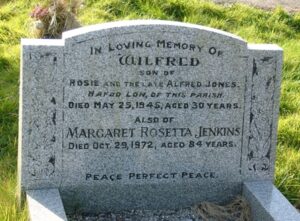
Glyn Aneurin Jones, Stoker 1st Class, D/KX 88239, Royal Navy. Glyn was the son of David Idris and Margaret Jane Jones, of Ammanford, and served aboard the Destroyer H.M.S. Gloucester. In September, 1939, Gloucester was flagship of the 4th Cruiser Squadron, serving in the East Indies and spent the rest of that year patrolling the Indian Ocean. In December, she was moved to Simonstown, South Africa where she was used, unsuccessfully, against German raiders. She was transferred again in May 1940, this time to the Mediterranean, where she experienced plenty of action. She was involved in Malta convoys and the Battle of Calabria on 9 July 1940. An Italian air attack on 8 July had hit the ship’s bridge killing or wounding most of the bridge personnel, including the Captain, F R Garside. The second half of 1940 was spent in the eastern Mediterranean and in the Aegean. On 11 January 1941, while supporting Operation Excess, Gloucester was hit by a bomb which failed to explode. In March, she was at the Battle of Matapan and, in April, performed several bombardments along the North African coast. A second bomb hit caused minor damage. Gloucester formed part of a naval force acting against German military transports to Crete, with some success. On 22 May 1941, while in the Kithera Channel, about 14 miles north of Crete, she was attacked by German Stuka dive bombers and sank, having sustained at least four heavy bomb hits and three near-misses. 723 lives were lost, with just 82 survivors. Her sinking is considered to be one of Britain’s worst wartime naval disasters. Glyn went down with the ship that day, and is commemorated on the Plymouth Naval Memorial.
Leonard John Jones, Private, 3963805, Sherwood Foresters (Nott’s & Derby Regt). Leonard was the son of Eliezer and Catherine Jones, of Llandybie, and served in the 8th Battalion, Sherwood Foresters. In April, 1940 the Battalion landed in Norway as part of the attempt to aid the Norwegian defence against the Germans. The Battalion had had little training and was not fully equipped, a situation made worse when the ship carrying its vehicles and heavy equipment was sunk. The Battalion then became involved in a withdrawal through mountains and deep snow, pursued by ski troops supported by aircraft and tanks. On 27 April 1940, the isolated group arrived at Venabygd, where they became ambushed by a squad of German troops. In the fierce fighting that followed, 53 men were captured, and five of the British killed, one of whom was Leonard. He was buried in a collective grave in Venabygd Churchyard alongside his four fallen comrades, and was only 21 years old. Many thanks to Stanley Sutherland for kindly supplying the photograph below, and for the information on the fighting.
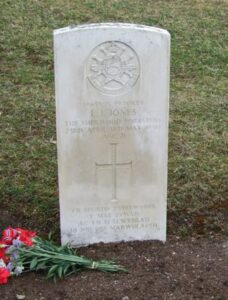
Albert Gordon Laugharne, B.A., Sub-Lieutenant, Royal Naval Volunteer Reserve. Albert was the son of Albert and Rose Laugharne, and the husband of Rosamond Mair Laugharne, of Ammanford. He served in the RNVR aboard H.M.S. Blackwood, which was an American Lend-Lease Destroyer that had been taken over by the Royal Navy on 27 March 1943. After over a year spent carrying out escort duties with the Atlantic Convoys Blackwood was torpedoed by U-764 off Portland Bill on 15 June 1944, and sank the next day under tow. Albert was killed in the initial torpedo strike and was 27 year old. He is commemorated on the Plymouth Naval Memorial, Devon.
Frederick Le Patourel, Lance Corporal, 14387842, Cameronians (Scottish Rifles). Frederick was the son of Percy La Patourel and May Le Patourel (nee Sheppard), of Llandybie. He served in the 2nd Battalion, Cameronians. In 1939 the 2nd Battalion went to France with the BEF and after heavy fighting in Belgium was evacuated at Dunkirk. Later they went to the Middle East before joining Montgomery’s Eighth Army for the invasion of Sicily and the battle for Italy. The Eighth Army were withdrawn from Italy and took part in the Invasion of Normandy in June, 1944, helping to push the Germans up Northwards through Northern France, Belgium and Holland into Germany. Frederick was killed here on 21 April 1945 and is buried at Becklingen War Cemetery, Germany.
William Trevor Lewis, Private, S/7604555, Royal Army Service Corps. William was the son of Thomas and Maria Lewis, of Llandybie, and served with the Base Supply Depot, Royal Army Service Corps. He was in France with the BEF, and was trapped in the south of France with thousands of other British servicemen when Dunkirk fell to the Germans. A rescue operation was planned, and William, along with an estimated 4-8,000 other refugees, embarked upon the troopship RMS Lancastria in the Loire River Estuary. She steamed for the safety of Britain, but was in the Bay of Biscay, when on 17 June 1940 she was attacked by two Junkers 88 bombers and sank, with the seas around her a flaming mass of burning fuel-oil. There were 2,477 survivors, and the losses accounted for more than a third of the losses of the BEF in France up to that date. William’s body was washed ashore, and he was buried at Pornic War Cemetery, France. He was 32 years old.
Arthur Ronald Morgan, Aircraftman 2nd Class, 1134212, Royal Air Force Volunteer Reserve. Arthur was the son of David and Gwennie Ann Morgan, of Gelly Road, Llandybie. Not much is known of him, but he died at Lerwick in the Shetland Islands, aged 20, on 16 August 1941, and is buried at Llandybie (St. Tybie) Churchyard. Lerwick was an RAF Coastal Command Base, as well as an important harbour during World War Two, and many British servicemen and women were stationed there. There is a vase placed on Arthur’s grave, with an inscription ‘From his Nurse at Lerwick.’
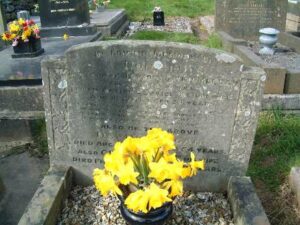
Charles Howard Page, Plumber 3rd Class, D/MX 66337, Royal Navy. Charles was the son of Charles and Flora Page, of Tenby. He married Annie Jones of Llandybie in 1938. He served aboard H.M.S. Charybdis, which was a Dido Class Destroyer, and was part of the Home Fleet. She transferred to the North Atlantic Command in April 1942, and set sail for the Mediterranean, where she took part in escort duties on the Malta Convoys, and aided in the North African Campaign, and at the landings at Salerno. She returned to the Atlantic, where on 21 October 1943 was ordered to intercept a German Supply ship. She was hit by two torpedoes on 23 October 1943, fired from two German torpedo boats, and sank with the loss of 462 men. Charles was one of these men, and was 33 years old. He is commemorated on the Plymouth Naval Memorial.
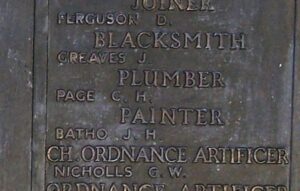
David Ivor Parry, Lance Corporal, 3912767, Monmouthshire Regiment. David was the son of Thomas and Edith Mary Parry, of Llandybie, and the husband of Ruby May Parry, of Abertillery, Monmouthshire. He served with the 3rd Battalion, Monmouthshire Regiment, which was a Territorial unit, attached to the 53rd (Welsh) Division. The battalion was transferred to the 11th Armoured Division in 1942, and landed in Normandy on 14 June 1944, in time to take part in the attempt to break out of the Normandy Beach-Head. On 5 August 1944 the battalion was surrounded by enemy forces on the Bas Perier Ridge and suffered heavy casualties. David was 31 years old when he was killed that day, and is commemorated on the Bayeux Memorial, France. David is not commemorated at Llandybie.
David Robert Harding Rees, Flight Sergeant, 1337828, Royal Air Force Volunteer Reserve. David, known as Harding, was the son of George Penry Rees and Dorothy Wynford Rees (nee Thomas), of Llandybie. Harding served with 78 Squadron, Royal Air Force, which flew the Handley Page Halifax III, based at RAF Breighton. The Squadron took part in a massed bomber raid on Berlin on 28 January 1944, and 49 out of a total of 677 aircraft were lost. Harding’s Halifax was shot down over the North Sea, probably on the return journey from the mission, and the entire crew were lost. Harding was just 22 years old, and is commemorated on the Runnymede Memorial.
William Peter Rees, Aircraftman 2nd Class, 1414735, Royal Air Force Volunteer Reserve. Peter was born at Llandybie in 1921, and was educated at Shoreham College. He served with the Royal Air Force during the war, and died of measles on 22 June 1945, aged 23. William is buried at Llandybie (St. Tybie) Churchyard.
Robert Edward Salisbury, Sergeant (W.Op/Air Gunner), 633936, Royal Air Force. Robert was the son of Thomas Salisbury and Frances Maud Salisbury (nee Carrod), of Llandybie, and served with 58 Squadron RAF flying the Armstrong Whitworth Whitley V, based at RAF Linton-on-Ouse, in North Yorkshire, On the night of 17/18 September 1940, Robert and his crew took off in P5008, one of ten aircraft that set off from the base to join raids attacking the heavily-defended industrial area of the Ruhr, Germany. Three were attacked and hit by German night fighters, causing them to crash in the Achterhoek, which is near the border, and P5008 was shot down by German fighter ace Paul Gildner. Robert and his crew all died in the crash that night, on 18 September 1940, and are buried next to each other at Winterswijk Cemetery, Netherlands. Robert was just 18 years old.
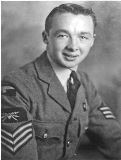
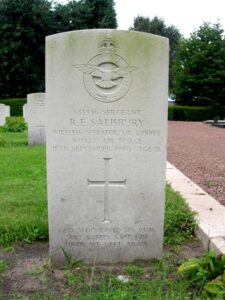
Owen Dixon Thomas, Flying Officer (Pilot), 45490, Royal Air Force. Owen was the son of Mr. and Mrs. Robert John Thomas, of Llandybie. He married Phoebe Pamela Williams of Westcliff-on-Sea, Essex in 1942. He served in 49 Squadron, RAF, which was equipped with the Handley Page Hampden medium bomber, based at RAF Scampton. in August 1940, one of the squadron’s pilots, Flight Lieutenant RAB Learoyd, won the first Bomber Command VC for his part in a joint low-level attack by Nos. 49 and 83 Squadrons on the Dortmund-Ems Canal. In 1942 No.49 Squadron converted to Manchester’s, then Lancaster’s, and it was in a Lancaster on the night of 17 September 1942, that Owen took part on a bombing raid on the huge Krupp armaments factory at Essen. Owen lost his life that night, aged 29, on 17 September 1942. He is buried in Reichswald Forest War Cemetery, Germany.
Stuart Randell Thomas, Private, 3967526, Welch Regiment. Stuart was the son of William and Magdalene Thomas. His father had lost his life in a colliery in Llandybie in 1918, and his mother later married Daniel Davies, of Llandybie. Stuart served in the 1st Battalion, the Welch Regiment. The 1st Welch were serving in Palestine at the outbreak of war, as a peace keeping force, then were posted to the Western Desert, arriving at Mersa Matruh during November 1939. Before they had a chance to take on the Italians in North Africa, they were sent to Alexandria and when the threat to the British refuelling bases at Crete became serious, were sent to reinforce the garrison on the island. On 14 May 1941, the German onslaught against Crete began. The island was saturation bombed by 600 Luftwaffe aircraft, softening up the British defences before the German airborne assault was launched. Waves of Junkers 52 troop carrier aircraft and gliders brought German paratroopers to the battle, and by pouring in reinforcements the Germans were virtually in control of the island within a week. The Battalions’ last stand in Crete came on 28 May 1941, when nine German battalions overwhelmed them. Some 300 survivors reached the British naval base at Sphakia, where they were evacuated to Alexandria. Stuart sadly didn’t get this far. He is recorded as having died between 27 May and 2 June 1941. He was 23 years old and is commemorated on the Athens Memorial, Greece.
Thomas John Irlwyn Williams, Sapper, 2147820 Royal Engineers. Thomas was the son of David James Williams and Margaret Anne Williams, of Llandybie, and served in the 210th Field Company, Royal Engineers. The 210th Company had been with the BEF during the fall of France, and then moved to North Africa. Where they took part in the Battle of El Alamein. Thomas was killed during the battle on 14 November 1944, aged just 21 and is buried at El Alamein War Cemetery.
Thomas Norman Williams, Stoker 1st Class, D/KX 132385, Royal Navy. Thomas was born at Llandybie on16 November 1906, the son of Stephen and Margaret Williams. He served with the Royal Navy aboard the Hunt Class destroyer HMS Hurworth. She had been commissioned in October 1941 and first saw action in the Atlantic before moving to the Mediterranean. She was operating in the Aegean on 22 October 1943 when she struck a mine and sank, with the loss of 113 lives, including Thomas. He was 36 years old, and is commemorated on the Plymouth Naval Memorial, Devon.
John Grenfell Wise, Sergeant (Air Gunner), 1835939, Royal Air Force Volunteer Reserve. John was the son of Thomas and Margaret May Wise, of Treloyhan, St. Ives, Cornwall, and was a Boy Chorister at St. Margaret’s, Westminster. He served in 49 Squadron, RAF, which flew Hampden’s from Scampton, Lincolnshire, and in April 1940, they helped inaugurate the RAF’s sea-mining campaign. Soon afterwards it began to drop bombs as well as mines, and in August 1940, one of the squadron’s pilots, Flight Lieutenant RAB Learoyd, won the first Bomber Command VC for his part in a joint low-level attack by Nos. 49 and 83 Squadrons on the Dortmund-Ems Canal. In 1942 No.49 Squadron converted to Manchester’s, then Lancaster’s, and in October led No.5 Group’s epic dusk attack on the Schneider armament and locomotive works at Le Creusot. In 1943 the squadron took part in the first “shuttle-bombing” raid (when the targets were Friedrichshafen and Spezia), and the famous raid on Peenemunde. Among the targets which it attacked during 1944 were the coastal gun battery at La Pernelle on the Normandy coast, and the V1 storage sites in the caves at St. Leu d’Esserent on the River Oise, some 30 miles north-west of Paris. On the night of 15/16 March 1944 John and his crew were part of a huge raid on Stuttgart. They were shot down on the return home, on 16 March 1944, and buried in a collective grave at Durnbach War Cemetery, Germany. John was just 19 years old.